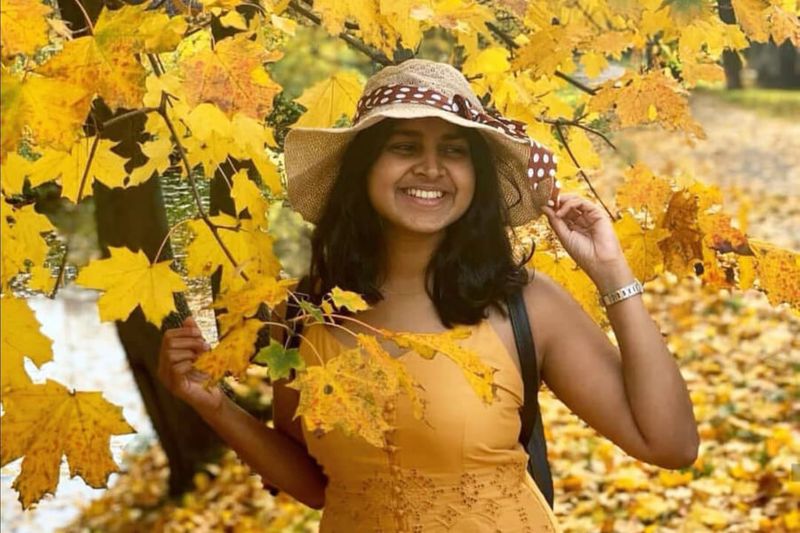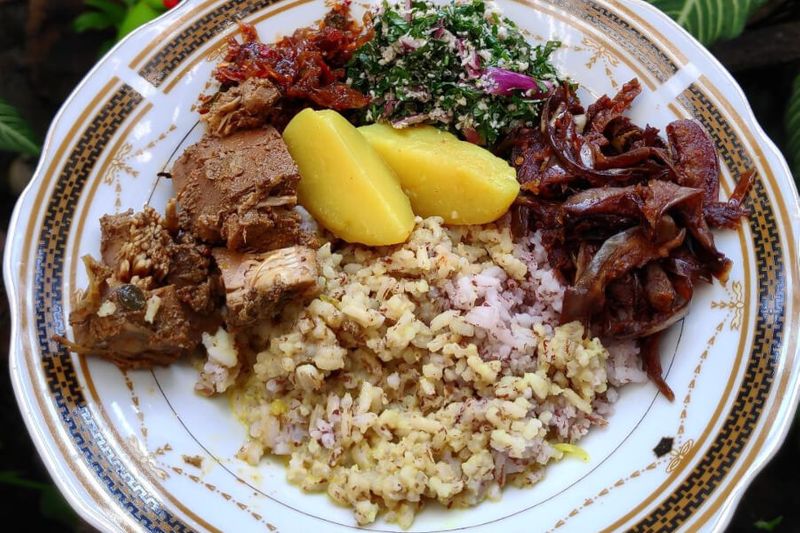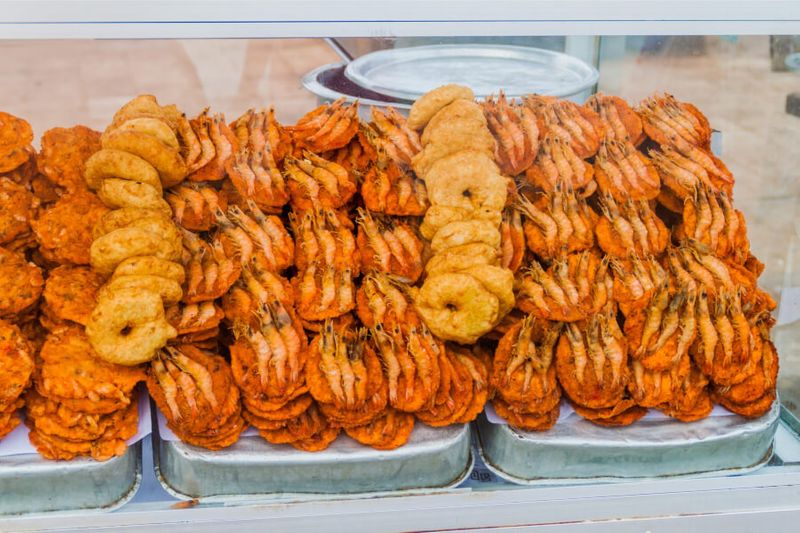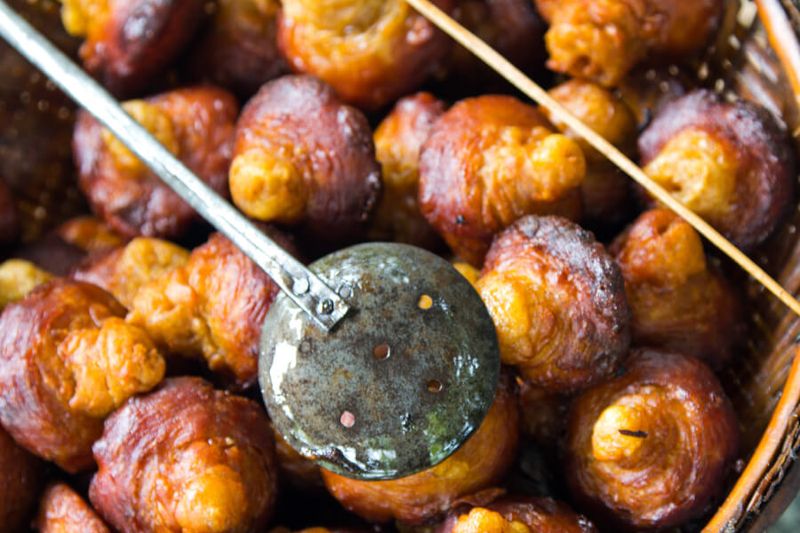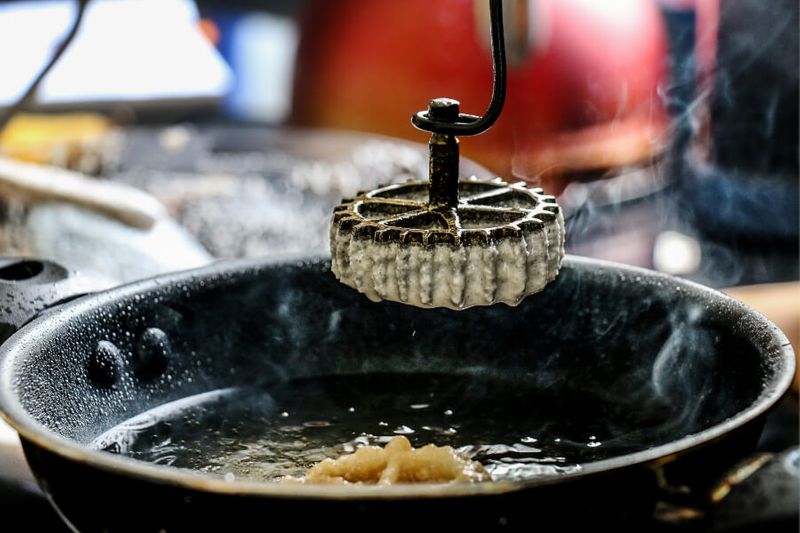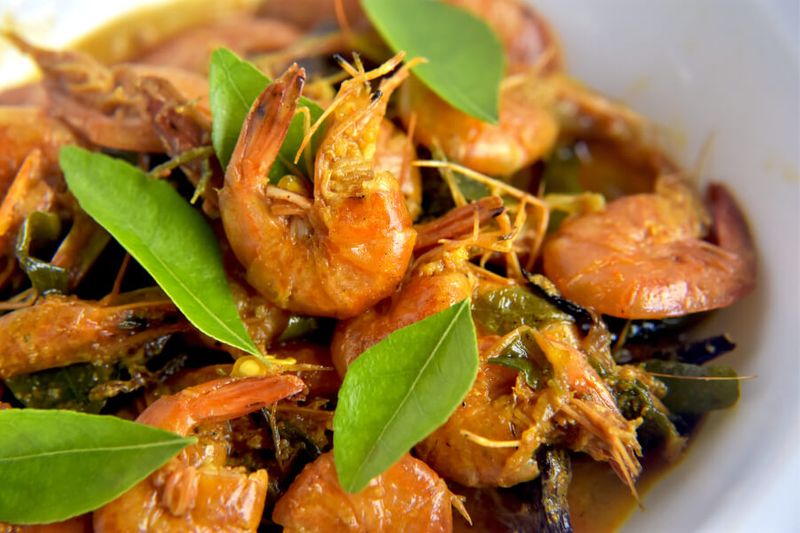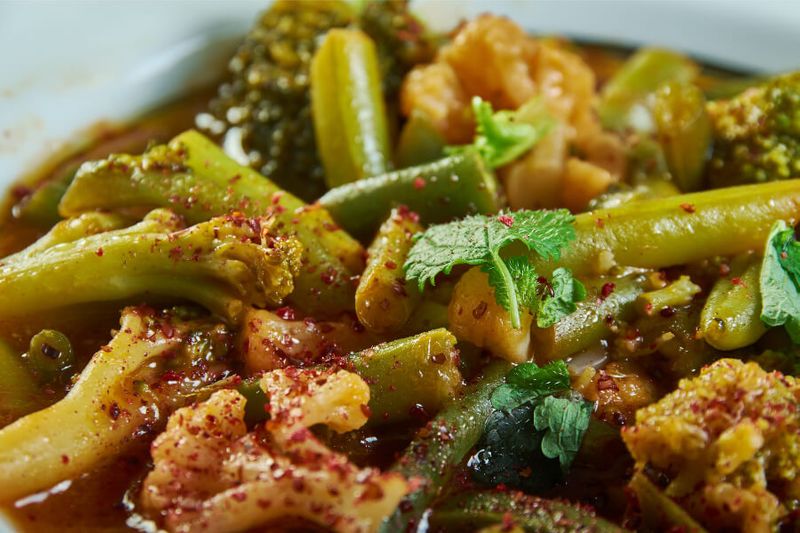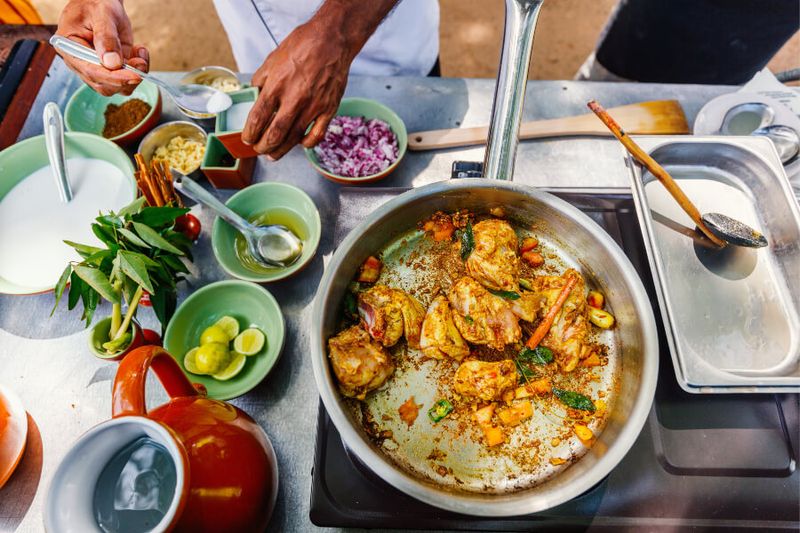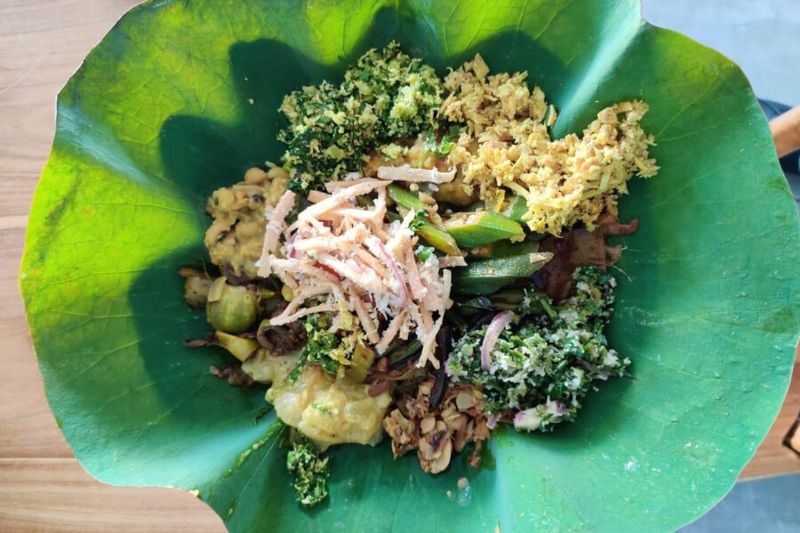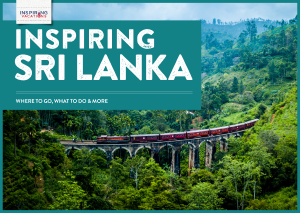Sri Lankan cuisine is an intoxicating marriage of spice and flavour
Sri Lanka is a culinary gem in a continent well-known for its cuisine. While it shares many similarities with neighbouring India and bears influences from right across the world due to its history of settlement, the country has a rich and diverse culture all of its own. There’s no better way to get to know this palmed paradise than through its food.
Sri Lankan spreads are a colourful affair, with eye-catching curries, bright greens and deep chilli reds decorating dinner tables. Rice is, of course, the staple; it’s so entrenched that a common Sinhalese greeting translates to “Have you eaten rice?”. However, Sri Lankan food remains relatively unknown in the west. Restaurants are starting to pop up, but they are far from achieving the staple status of their Asian counterparts.
We spoke to Sumalka Mendis, a doctoral researcher from Sri Lanka, now based in Plymouth in the UK, about food in her home country. Sumalka’s Instagram (@lankangirlinplymouth) is dedicated to travel and showcasing all things Sri Lankan, with a particular focus on the delicious cuisine and her own home-cooking endeavours.
How does food keep you connected to your home country?
When I flew to the UK to pursue my postgraduate education, I was worried whether I would survive. At home, I was a terrible chef; everything I cooked could lead to a major disaster. But when I moved, I was forced to learn because I couldn’t stop craving Sri Lankan food. I started making dishes that I missed the most, finding spices locally and improvising where necessary. Now, every time I go home, I bring back a suitcase full of spices and other ingredients for my culinary expeditions.
Living away from home can get quite lonely sometimes, so whenever I am homesick, I try to make a new Sri Lankan dish that I haven’t attempted before. If I didn’t come abroad to study, I don’t think I would’ve even attempted cooking.
Growing up, what were your favourite Sri Lankan dishes and why?
There’s a lot, but if I had to choose, I would say that my mum’s rice and curry tops everything—especially her red rice, coconut sambol and devilled sprats with papadoms. It’s simple everyday food, but you can never get sick of it. I also love mallum made with gotu kola—a dish of chopped green leaves mixed with onions, spices and coconut, made into a salad – and string hoppers (rice flour dough pressed into noodles and steamed) with white potato curry, spicy fish curry and coconut sambol.
If we’re talking about street food, kottu tops it all. A Sri Lankan kottu is a mixture of spiced vegetables and meat cooked in a wok or on a hot grill, with pieces of rotti mixed in. It’s a must-try. My next favorite is isso vadei—fried lentil patties topped with prawns, best enjoyed by the sea in Galle Face Green, Colombo. I’ve tried to make the dish several times, but nothing can match the taste and atmosphere of Galle.
I also love achcharu—any type of it actually. Achcharu is a spicy fruit mix; it might not sound very appealing, but if you are in Sri Lanka, it is a must-try and trust me, you won’t regret it!
Sri Lanka is a multicultural country, so it’s a bit hard to pinpoint one dish and name it Sri Lankan cuisine. I think what sets our cuisine apart are the spices we use, which are mostly endemic to the country. In some dishes, you will find South Indian influences, but the ingredients, along with the warmth and hospitality Sri Lanka has to offer, give it a twist.
Do you have any special memories related to food?
The thing I enjoy most about being Sri Lankan is that we celebrate festivals as one, despite our individual religious beliefs. My favourite time of year is Awurudu or the Sinhala and Tamil new year season, which falls during April. The event is wrapped around a week of activities. It’s an auspicious time when families reunite, celebrate and eat plenty of good food.
The New Year table is typically filled with a variety of sweets. My parents, despite their extremely busy schedules, always found time to make sweets when my siblings and I were home. We were all involved in the process, each of us given little chores to do. Kokis—deep-fried sweets made from rice flour and coconut milk—are one of my favourites during the New Year.
My mum was always busy making the batter and filling it, while my father did the cooking. I used to love sitting beside my father at the stove as he fried perfect kokis. With the leftovers, my mother used to make pancakes and add food colouring to turn them pink, green or blue.
Why do you think food is so important to Sri Lankan people?
The food culture in Sri Lanka has long been dominated by rice eaters. This was mainly because the carbs were needed for agricultural workers, and Sri Lankan rice and curry is rich in all the nutrients you need. As a multicultural country, Sri Lanka has an amazing food scene that ties in with the various festivals we celebrate as a nation. Moreover, being an island nation, we have a huge range of seafood, with different regions known for different dishes. You will be amazed at how different parts of the country can cook the same vegetables or styles of curry and achieve different flavours.
I believe food is what keeps Sri Lanka united, despite all the barriers that try to divide it. Every Sri Lankan knows the taste of a good rice and curry, the taste of New Years sweets, the taste of watalappan (coconut custard pudding) during Eid or Ramadan, and the taste of Pongal Rice and Laddu during Thai Pongal (Harvest Festival). The reason is because we share. Every festive season, you’ll see people sending plates of food to their neighbours or friends, no matter their religion. As I see it, Sri Lanka is nothing without its people, and it’s this diversity that makes the country so vivid and rich in culture, cuisine and history.
If you ever visit a Sri Lankan household, make sure you starve for the entire day prior. And trust me when I say Sri Lankan mothers won’t take ‘I’m full,’ as an answer, even if you’ve already eaten.
What would you like first-time travellers to Sri Lanka to know about the cuisine?
I’d say the most important thing is to make sure you communicate your allergies properly before ordering food, as many dishes may contain nuts or other common allergens. If you’re vegetarian or vegan, you need not worry. The majority of people are Buddhists, so we have a huge range of staple vegetarian and vegan dishes.
Sri Lankan cuisine can be a bit on the spicy side, with many varieties of chilli. If you’re ordering something that highlights a certain type, make sure you let the chef know your desired spice level and don’t be afraid to ask how spicy it is. Luckily, dishes can be made extremely mild while still keeping the same taste.
Finally, I would say when you’re in Sri Lanka, don’t limit yourself to hotel food or expensive dining experiences. The country has a culture of street food, so if you’re willing to explore, you won’t regret it!
What are some dishes that first-time travellers should order?
When you land in Sri Lanka, the first thing you should eat is a proper rice and curry. There are many restaurants around Colombo and beyond that serve authentic rice and curry in banana or lotus leaves. Eventually, you can move onto other local dishes like string hoppers, pol rotti (coconut rotti), vadei and biryani. If you’re a fan of seafood, Sri Lanka is a perfect food getaway. Crab and lobster curries are both great options, along with hot butter cuttlefish. Make sure you try some watalappan (coconut custard) or sago pudding for dessert, too!
